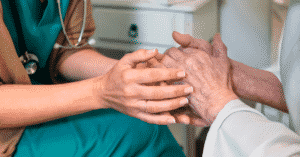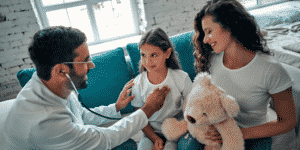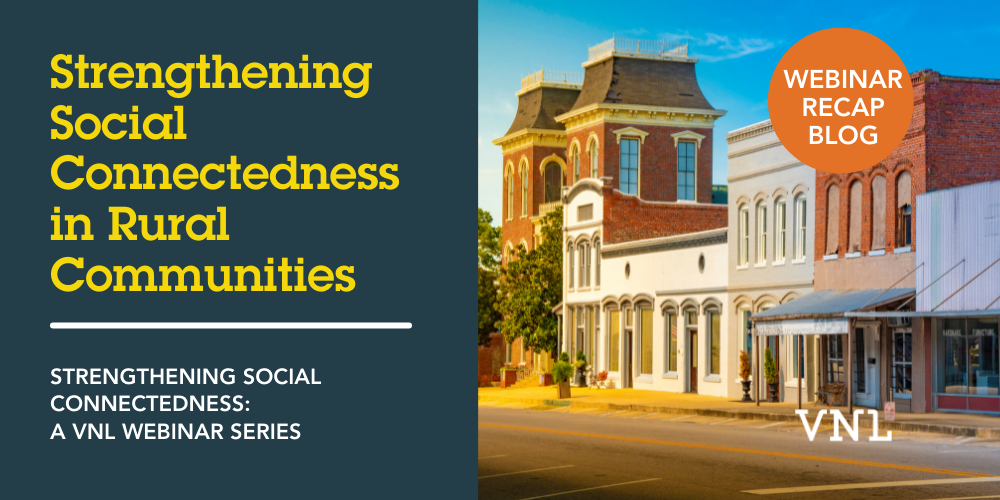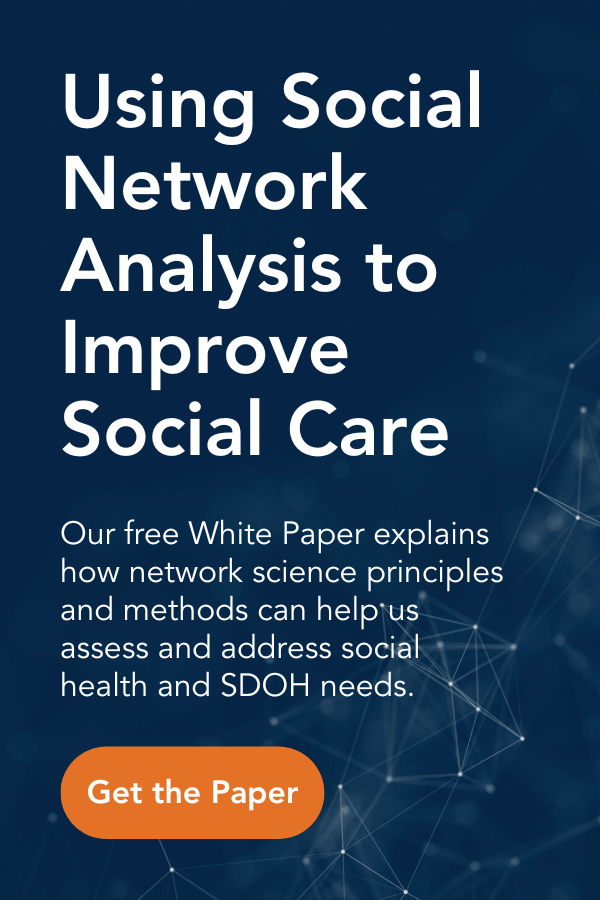Webinar Recap: Strengthening Social Connectedness in Rural Communities
On July 27th, 2022, our Strengthening Social Connectedness in Rural Communities webinar was live-streamed, and it was hosted by Visible Network Labs’ (VNL) Founder and CEO, Dr. Danielle Varda. We were grateful to be joined by three expert panelists involved in the day-to-day work of uplifting rural communities:
- Miko Pickett – Executive Director, Pick 42 Foundation
- John Kennedy – Senior Project Manager, Rural Connectivity Lead, Colorado Office of eHealth Innovation (OeHI)
- Dr. Katherine (Kathy) James, PhD, MSPH, MSCE – Associate Professor, Center for Health, Work & Environment, Colorado School of Public Health
Although 97% of land in the United States is classified as rural, only 14% of the US population, approximately 46 million people, live in those areas. The 3% of land in the U.S. that is considered urban is home to over 80% of the population — some 285 million Americans. Over the last decade, rural populations have declined slightly (-0.6%), while urban populations have increased (+8.8%).
All areas have unique challenges and problems, but rural communities face long distances to health care facilities, lagging or no broadband internet access or cellular service, and also much higher rates of “unintentional injuries” – like drug overdoses, motor vehicle accidents, and falls. Common sources of income in rural areas, such as agriculture and mining, have much higher rates of injury and death than other occupations; in 2016, 417 workers in the agriculture sector died from workplace injuries, and each day there were 100 “non-fatal, lost work-time” injuries experienced by workers in the sector.
Throughout our work mapping connections in communities around and the country (and the world) we’ve been struck time and time again by the resilience, cohesion, and strength of rural communities; banding together to rebuild after natural disasters, volunteering to help the less fortunate, and the ability and willingness of community members to wear many hats in their efforts to better serve those around them. We are proud to provide both our PARTNERme and PARTNER CPRM platforms to those doing research and extending care in rural communities.
Read on for highlights from our panelists’ presentations.
Miko Pickett, Executive Director, Pick 42 Foundation
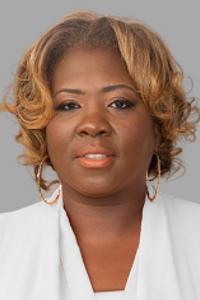
In October 2016, Hurricane Matthew hit the southeastern United States, killing 40 people and causing over $10 Billion in damages. In 2018, Hurricane Florence tore through the Carolinas again, causing over $24 billion in damages, and claiming 54 lives. As Marion County and other Carolina communities were recovering from the storms, the COVID-19 pandemic in 2020 dealt an unprecedented, staggering blow. Through these disasters, residents of Marion County came together to help shelter and provide for neighbors and friends, but unfortunately, there are still residents that are displaced by the hurricanes.
Miko and the Pick 42 Foundation have been active in helping people in need – folks who are displaced, those who may be struggling with food insecurity, and adults and children who are living in poverty. Some of the programs that the Pick 42 Foundation operates, which have served over 5,000 families, and 13,000 individuals in the area, include:
- The Mobile Food Pantry – Pick 42 collaborates with their local food bank, Harvest Hope. Pick 42 fills a truck with groceries and supplies, distributing it to their partner network – nine churches and nonprofits, who then give it to the people they serve. This allows the food to be delivered to a wider area.
- Marion County Food Policy Council – Pick 42 gathers community members to discuss food insecurity in the county. Farmers, restaurateurs, and community members get together to guide food policy in the county. Their findings and insights are given to the South Carolina Food Policy Council, where Miko sits as Vice Chair on the Board of Directors.
- Reimagining Gardens – Birthed through the County Food Council, Reimagining Gardens is Marion County’s first community garden. The garden has support from many local and state organizations. Miko and the Council are looking forward to expanding the program from one garden to five, one of which will be an edible forest – “designed to thrive without pesticides or herbicides or crop rotation, weeding or mowing.”
- Community Garden Food Share – Held weekly, the community garden food share helps to distribute excess fresh fruits and vegetables, and offers them to the public. At these gatherings, the community comes together to share gardening tips and tricks, as well as tasty recipes for the fresh produce offered.
John Kennedy, Senior Project Manager, Rural Connectivity Lead, Colorado Office of eHealth Innovation (OeHI)
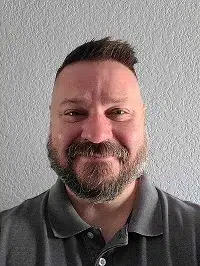
John began his presentation with some “rural vocabulary”; for example, RHCs, or Rural Health Clinics, and CAHs, or Critical Access Hospitals. CAHs, defined by the Center for Medicaid Services (CMS) as facilities that have fewer than 25 beds, that are also more than 35 miles away from the nearest hospital, making them a critical part of rural care. Terms like these underscore just how much of a challenge rural health care can be – long distances, and a limited amount of beds.
But why the focus on rural health? Generally, when poverty, drug addiction, and lack of services are discussed, urban centers may come to mind. But some of the statistical realities in Colorado John presented are striking:
- 20% of rural children live in poverty, compared to to 11% of urban children
- 54% of rural areas completely lack OB/GYN services
- 9 out of 10 Colorado counties with the highest opioid addiction rates are rural
Using funding from the HITECH act, which originated from the Center for Medicaid Services, John and the OeHI team developed an analytics platform that now serves 75% of safety-net facilities in the state. Safety-net facilities are defined as “providers that organize and deliver a significant level of healthcare and other needed services to uninsured, Medicaid and other vulnerable patients.” 61% of safety-net facilities have also participated in the state’s environment scan, and health information exchange (HIE) access has been improved, with 20 new safety-net facilities onboarded.
When the HITECH act ended two years ago, the novel work that was being performed by OeHI and the state was given new funding by the state of Colorado. Currently, 72 of 84 rural safety-net facilities are connected to HIE, and a strategy to connect the remaining CAHs and Rural Health Clinics (RHCs) has been finalized. More funding for rural connectivity has been approved for the state’s 2023 fiscal year, and an implementation plan for a minimum viable product for an analytics solution has a release scheduled for Fall 2022.
Some continued focus areas for John and OeHI:
- Reaching independent rural health practices; these practices are where most rural patients and visitors receive care.
- Improving coordination; with better results in patient experience, lower lifts for providers, and cost savings for all.
Dr. Katherine (Kathy) James PhD, MSPH, MSCE – Associate Professor, Center for Health, Work & Environment, Colorado School of Public Health
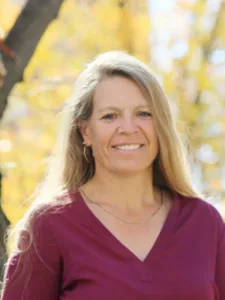
Most, if not all of Dr. James’ and her team’s research in the San Luis Valley project is community-based and participatory, involving the community as partners from conceptualization all the way through to the reporting stage. Individuals, networks and organizations in the community, such as health providers, schools, teachers, and community advocacy groups, help to bring concepts and studies to life.
The San Luis Valley is home to a large agrarian population. The Valley is the fifth largest producer of potatoes in the United States. There is a sizable tourism industry as well, as the Valley contains Great Sand Dunes National Park, a unique and popular destination. Since 2002, there has been a prolonged drought affecting the area, leading to decline in snowpack. Faster, earlier melting has had a large effect on the farming community, with less water overall and drastic shifts in when the water will be available.
The impact has been pronounced, with harshly negative effects on farmers; in the past 10 years, many farmers have stopped using their land to grow crops, decreasing the land available for crop production by 20%, leading to
- Decline in food production
- Decline in economic activity
- Loss of lifestyle and heritage that has been in the San Luis Valley for the last 180 years
- Increases in anxiety, depression, addiction and suicide
Through her work on other studies, Dr. James continues to work closely with occupational groups in the agricultural community. After meeting with agri-business leaders like farmer owner-operators and the farmer’s union, Dr. James saw a need for increased mental and behavioral health services, as the San Luis Valley community is facing tough circumstances caused by the drought, which by all expert accounts will not be easing anytime soon. As Dr. James put it, “this will be a long-term community adaptation and mitigation process.”
Working with the national organization Agri-Safe, Dr. James spoke on the concept of “Total Farmer Health,” a look at the overall health of a farmer segmented into burdens (financial, chronic pain), needs (access to mental healthcare, providers who are familiar with agriculture), and what could help make an impact on these (greater mental healthcare utilization, improved community networks). Especially during the current economic difficulties, supplies that farmers need to survive (fuel, fertilizer, and water, chief among them) are increasingly expensive, creating heart-wrenching challenges that almost no one outside of the farmer community can understand. Dr. James framed it like this: “The types of questions farmers face as they wake up are ‘Do I need to slaughter my eight cattle today? Because I can’t feed them.’” Stark, persistent realities like these can bring about serious mental health issues for farmers.
Finding effective ways to improve total farmer health will require first understanding the social health of farmers, and second, understanding the resources that are available, like informal supports (peers) or formal supports (government, mental and physical care providers).
VNL’s partnership with Dr. James and the Colorado School of Public Health involves two parts – the first is her team deploying VNL’s PARTNERme social care screening platform – which quantifies social needs using a strength-based screening that visualizes an individual’s existing social support network — to perform a community-based, pilot study of 250 agriculture workers to better understand existing behavioral health and the resources utilized for health in the San Luis Valley. Farmer owner-operators, field laborers, migrant workers, and seasonal laborers are included in the study.
The PARTNERme survey will include questions about stressors and needs (food, finances, housing, work, etc.) and which resources they’ve used to mitigate stress (community-based, peer, formal). After the self-reported data is entered, PARTNERme then identifies gaps — the individual’s most pressing needs, which are mapped and shown as their overall social health. Finally, relevant social resource referrals are provided on a map, showing the locations of available resources.
- Participants will be compensated for their time, approximately 45 minutes;
- Participants will be provided with their most of their results immediately following the screener;
- Should participants signify a high level of stressors, or any level of suicidal ideation, the platform will immediately provide pop-up resources that they will be directed to;
- Aggregate and summary findings will be disseminated to community partners and agriculture worker participants, which will show the community as a whole;
The second part of the study involves Dr. James and her team deploying VNL’s PARTNER CPRM (Community Partner Relationship Management) platform to the organizations identified by agricultural workers. PARTNER CPRM works to collect, map, and analyze the data – creating a picture of which organizations talk to and collaborate with each other, and where there may be areas of improvement – where organizations tackling similar issues can collaborate further for greater positive outcomes for those they serve. The combined results of data garnered through PARTNERme and PARTNER CPRM will provide a comprehensive look at behavioral health care among agricultural workers in the San Luis Valley.
Register for Our Upcoming Webinars!
We thank and appreciate Miko, John, and Dr. James for being our panelists! We encourage our readers to learn more about them and their initiatives. For more information on our upcoming and past webinars, view our Social Connectedness Webinar Page to sign up for what we have upcoming, and to access a complete archive of our past 2022 webinars.
Be sure to stay tuned to our Visible Us Blog for more product updates and VNL Team content!
About the Author: Will Jacobson
Will Jacobson is the Business Development Representative on VNL’s Marketing and Communications Team. Originally from New York City, Will loves living in Colorado and all the outdoor life it has to offer. He’s also a pretty big foodie!
|
|
Thank you for Signing Up |

More Social Care Resources
